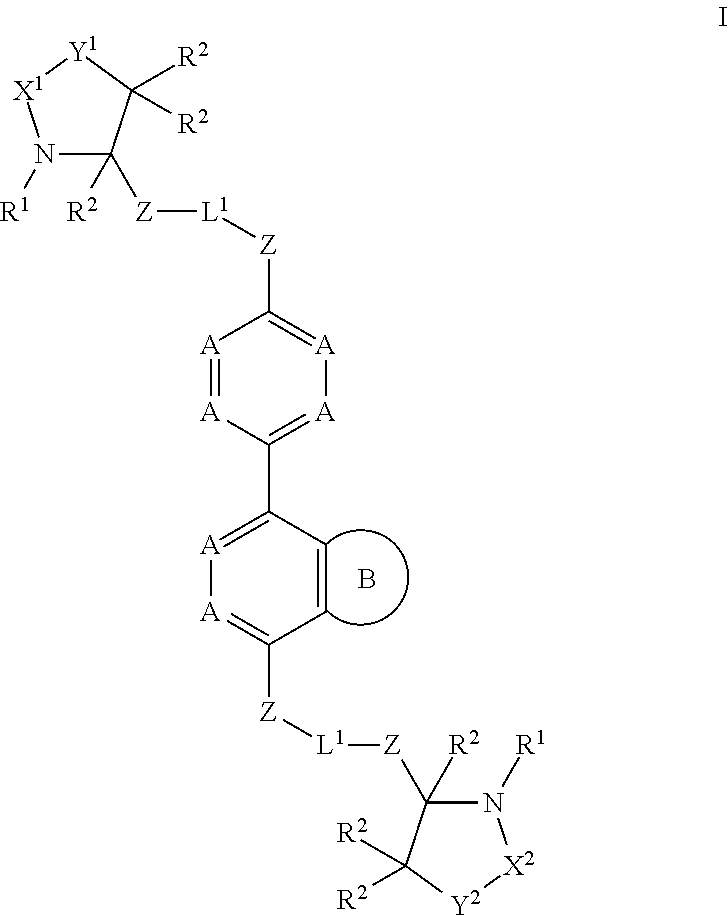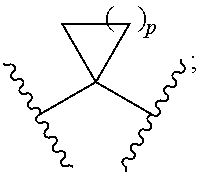Novel inhibitors of hepatitis c virus replication
a technology of hepatitis c virus and inhibitors, which is applied in the direction of drug compositions, peptides, medical preparations, etc., can solve the problems of increased risk of hepatocellular carcinoma, increased risk of advanced fibrosis or cirrhosis on liver biopsy, and no effective treatment alternative for patients
- Summary
- Abstract
- Description
- Claims
- Application Information
AI Technical Summary
Benefits of technology
Problems solved by technology
Method used
Image
Examples
example i-i
Preparation of Compound 301 and 302
[0546]
General Procedure I-A
[0547]A solution of 1-Bromo-naphthalene (I-Ia; 2 g, 9.6 mmol) and acetyl chloride (0.84 mL, 11.6 mmol) in 1,2-dichloroethane (30 mL) was cooled to 0° C. and aluminum chloride (2.88 g, 21.6 mmol) was added portion wise. The mixture was stirred at r.t. for 24 hours. The reaction mixture was poured into ice-water (100 mL). The two layers were separated and the aqueous layer was extracted with EtOAc (150 mL×3). The combined organic layers were dried over magnesium sulfate, filtered and the solvent was removed under reduced pressure to give compound I-Ib as an orange oil (2.16 g, yield 91%). 1H NMR (400 MHz, CDCl3) δ 8.6 (m, 1H), 8.3 (m, 1H), 7.8 (d, J=8.0 Hz, 1H), 7.66 (d, J=7.6 Hz, 1H), 7.58 (m, 2H), 2.63 (s, 3H). MS (ESI) m / z (M+H)+ 250.
General Procedure I-B
[0548]To a solution of compound I-Ib (2 g, 8.1 mmol) in toluene (20 mL), Na2CO3 (0.86 g, 8.1 mmol) and 4-acetylphenylboronic acid (I-IC; 1.6 g, 9.7 mmol) were added, the...
example i-ii
Preparation of Compound 303 and 304
[0555]
General Procedure I-I
[0556]The mixture of 5,6,7,8-tetrahydronaphthalen-1-ol (IIa; 5 g, 33.74 mmol), CH3I (4.8 g, 33.74 mmol), and K2CO3 (35 mmol) in dry acetone (20 mL) was stirred at reflux overnight. After being cooled to room temperature, the solvent was removed under reduced pressure, and the residue was extracted with ethyl acetate (20 mL×3), washed with water (50 mL) and brine (50 mL). The combined organic layer was dried over anhydrous Na2SO4, and concentrated under reduced pressure to afford crude product, which was purified by column chromatography to afford 1,2,3,4-tetrahydro-5-methoxynaphthalene (IIb; 5.47 g, yield: 100%). MS (ESI) m / z (M+H)+ 1.63.
General Procedure I-J
[0557]Acetyl chloride (2.54 g, 32.6 mmol, in 30 mL of 1,2-dichloroethane) was added dropwise to a solution of 1,2,3,4-tetrahydro-5-methoxynaphthalene (IIb; 4.8 g, 29.6 mmol) and anhydrous AlCl3 (5.08 g, 38.5 mmol) in 100 mL of 1,2-dichloroethane. The reaction mixture ...
example i-iii
Preparation of Compound 305, and 306
[0564]
General Procedure I-Q
[0565]NaCNBH3 (6.4 g, 101.1 mmol) was added to the mixture of compound I-IIIa (5.0 g, 33.7 mmol) and zinc iodide (32.3 g, 101.1 mmol) in dichloroethane (100 mL), the mixture was stirred at reflux for 2 hours. The reaction mixture was then filtered through SiO2 while still warm, eluding further with dichloroethane. The filtrate was collected and concentrated under reduced pressure. The residue was added to diethyl ether and the resulting white precipitate was filtered off. The filtrate was collected and concentrated in vacuo, then purified by flash column to give compound I-IIIb (3 g, yield: 66%). 1H NMR (400 MHz, CDCl3): 7.02 (m, 1H), 6.80 (d, J=5.2 Hz, 1H), 6.61 (m, 1H), 2.91 (m, 4H), 2.05 (m, 2H).
General Procedure I-R
[0566]To a solution of compound I-IIIb (2.9 g, 21.6 mmol) in 30 mL of DMF was added NaH (0.67 g, 28.1 mmol) at 0° C. After addition, CH3I (3.68 g, 25.9 mmol) was added, and the reaction mixture was stirred...
PUM
| Property | Measurement | Unit |
|---|---|---|
| prothrombin time | aaaaa | aaaaa |
| time | aaaaa | aaaaa |
| time | aaaaa | aaaaa |
Abstract
Description
Claims
Application Information
 Login to View More
Login to View More - R&D
- Intellectual Property
- Life Sciences
- Materials
- Tech Scout
- Unparalleled Data Quality
- Higher Quality Content
- 60% Fewer Hallucinations
Browse by: Latest US Patents, China's latest patents, Technical Efficacy Thesaurus, Application Domain, Technology Topic, Popular Technical Reports.
© 2025 PatSnap. All rights reserved.Legal|Privacy policy|Modern Slavery Act Transparency Statement|Sitemap|About US| Contact US: help@patsnap.com



